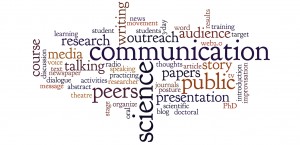Oct 09 2015
Nature Defends Science Communication
 An editorial in Nature Biotechnology titled, Standing Up for Science, takes direct aim at the problem of science communication in our society. (It’s a short article – read it.) It’s a wonderful editorial, and I completely agree with it. This should not come as a surprise to any regular readers here.
An editorial in Nature Biotechnology titled, Standing Up for Science, takes direct aim at the problem of science communication in our society. (It’s a short article – read it.) It’s a wonderful editorial, and I completely agree with it. This should not come as a surprise to any regular readers here.
The article focuses on the recent events involving US Right to Know using Freedom of Information Act (FOIA) requests to essentially harass public scientists and troll through their e-mails so that they can take lines out of context and use it for anti-GMO propaganda. This effort was funded in part by a $47,500 donation from the Organic Consumers Association. The irony of this was apparently completely lost on USRTK.
The main target (so far, this affair is likely not over) was Kevin Folta, a gifted and dedicated science communicator (he has been a guest on the SGU a couple of times and was a speaker at NECSS). The “smoking gun” revealed by USRTK was that Monsanto had donated $25,000 (that’s $22,500 less than USRTK got from Big Organic) to Kevin’s University for public outreach, funds which he used to pay for gas money and snacks when he traveled for public speaking engagements. As Nature points out:
Folta broke no laws. The Monsanto funds were a donation to his university’s Foundation outreach program. They were tied neither to him directly nor to his research. His conflict of interest disclosures were wholly compliant with his university’s rules. He never used industry funds for personal gain.
But none of this mattered – it was the appearance that USRTK was interested in, not the reality. (Foodbabe has now jumped on this bandwagon, she’s not even an original hack.)
I will extend Nature’s point here. They correctly point out the many challenges that face science communicators: Industry cannot fund science outreach without “tainting” it, researchers have little incentive to spend limited research money on outreach, media outlets are motivated toward superficial clickbait rather than in depth scientific analysis, and many now lack dedicated science reporters or editors. Add to all this, those scientists who are motivated to communicate science will now face harassment.
The deeper problem here is that it is a great deal easier to promote misinformation than accurate information. If you are not constrained by intellectual integrity, it is really easy to promote fear, lies, misdirection, and innuendo, to demonize a person, company, profession, or industry, to spread conspiracy theories, and to intimidate and silence those who have intellectual integrity. The internet and social media are hugely slanted in favor of those who lack integrity, because they can use sound bites, clickbait, emotional appeals, graphic images, and similar means to make their points.
Meanwhile, deconstructing nonsense takes time and effort. We sometimes refer to this asymmetry as the “Gish Gallop” – creationist Duane Gish made a career debating scientists, and would overwhelm them with superficial bits of misinformation. Social media is now a Gish Gallop of misinformation on every scientific topic with social, political, or marketing implications.
For a would-be science communicator, the task is daunting. For a scientist to spend their time communicating science to the public, they have to develop the skills necessary to do this (which is not as easy as many may assume). They need to learn how to interface with the media. They need to develop a style that allows them to be accessible to the lay public without distorting or dumbing down the science. They need to be exciting without overhyping or being “clickbaity.” There are plenty of examples of sincere scientists making every one of these kinds of error, and fewer examples of those who get it just right.
In addition, I firmly believe that scientist-communicators need to have a working knowledge not only of their science, but of the relevant pseudosciences, and of pseudoscience and critical thinking in general. They need to understand what the public thinks, how they are being misinformed, and the major players out there that are actively misinforming the public.
They should also expect almost nothing in return. Unless you are one of the very few superstars, or are a best-selling author, the rewards are few. Academia does little to incentivize or reward public outreach. In fact, many of the old guard in academia still feel it’s “dirty” somehow.
What you will reap is harassment from pseudoscientists, purveyors of snake oil, and the minions of vested interests that feel the scientific opinions you are communicating are inconvenient. You will also open yourself up to liability, as there are those who are not afraid to use the courts for legal intimidation. Now you will also face FOIA requests.
The purpose of all this is absolutely clear – to silence experts who want to set the public record straight. If your business model is based on fear, denial, conspiracy theories, or just bad science, then science communicators are the enemy. Ironically, the attempted silencing of public scientists is often done under the guise of “freedom.”
Conclusion
The Nature editorial concludes:
Nature’s original mission, after all, is to “place before the general public the grand results of scientific work and scientific discovery.”If we are to have a thriving science-based society, there is an urgent need to work on the public understanding of science. But it may be prudent to start by improving scientists’ understanding of the public and what it means to ‘go public’.
I agree. Further, if we value science communication we have to value it, that means we have to fund and reward it. Words matter little. As the saying goes, “Don’t tell me your priorities, show me your budget.”






